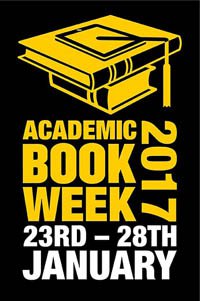Rumours of the death of the printed academic book have been exaggerated
by Alan Staton
23 Jan 2017
In the world of trade book publishing and bookselling the print versus digital debate seems quaintly old-fashioned; something from that remote era, the recent past. The world has moved on, some genres have been ‘lost’ to digital, other genres and sub-genres owe their very existence to digital. Meanwhile, Vloggers and Youtubers find their ultimate validation in the publication of print books and the bestseller of 2016 was the online lifestyle and fitness guru, Joe Wicks.
Ten years ago authors, publishers and booksellers were trying to imagine what the digital future might look like. Curiously even the strongest and most cogent cases put still somehow looked unconvincing. The ‘Paperists’ – those arguing that the printed book would never die and that the ‘Digitalists’ were both bedazzled by the emperor’s new e-ink capabilities and petrified of being thought of as less then contemporary – advanced arguments that seemed like wishful-thinking. The book offered a uniquely haptic experience. The book already existed in a handy, portable format. The best that an e-book could offer was a poor approximation of the experience of reading a physical book. All of which was true but would the coming tsunami of digital natives care less? The Digitalists case lay strongly in the notion of generational change and a transformative device, whatever it would be, that would change the habit of all generations. (If the e-Reader hadn’t turned up at the party at almost exactly the same time as the smartphone and the tablet, things might have been different.) And there was the precedent of the music industry, though whether that was a reliable precedent was debatable. It was the CD that uncoupled the track from the long-form album; all Napster and Apple did was take that uncoupling to its logical conclusion. And whoever wanted to read the chapters of a library of novels ‘on shuffle’?
At the academic book trade’s annual conference in the late-noughties a student panel was introduced and this feature continued for many years. These digital natives would tell us what they wanted and what they wanted would surely be digital. Except of course they didn’t. They preferred print. It wasn’t that simple of course; they held two dynamics, the first being that print beat digital but the second being free beat paid-for. So many lived with the trade-off that what they could come-by digitally for free would do, even though it wasn’t what they preferred. Except at such times when only the book would do; revision times, exam times, times when they wanted to bend back the spine and write in the margins. At those vital times only the book gave them the reassurance, the provenance, the authentication that they required.
So, in the last five years or so we have seen publishers who had previously imagined their future strategies would be around a digital-only future accepting that the academic books market will continue to be mixed format for the remainder of most of our lifetimes. If academic publishers have stopped being so digitally obsessed what about universities and teaching academics? The Booksellers Association did some research in 2016 among students and lecturers at the same redbrick university into attitudes towards various media and their desirability and efficacy as teaching and learning resources. We asked the student what their most-used, preferred and most-effective learning medium was. The results were conclusive; 52% most-used print books, 74% preferred print books and 62% found print books the most effective. When we asked lecturers for their perceptions about what the most effective media for teaching were the results were startling. Compared with the 62% of students finding print most effective only 37% of lecturers said the printed book, nearly two thirds seeing some form of digital as the optimum medium. It’s easy to see why lecturers feel this way. Digital learning environments offer so much; with in-built analytics they can understand so much about what content students are consuming and how they are learning. Content can be tailored, calibrated, refined…. And the uncoupling of the chapter or section from the long-form which happened with music but is irrelevant to fiction or narrative non-fiction can be an asset within the teaching environment. But it is not, as yet, demand-led. There is a strong push from the universities but the much-expected pull from the student remains, at best, sporadic. It would be glib to say that the academic book of the future is print but naïve to assume that the future of the academic book must be digital.
Alan Staton is Head of Marketing at the Booksellers Association.



